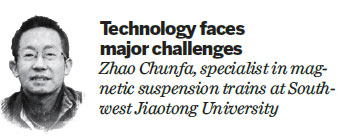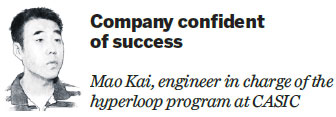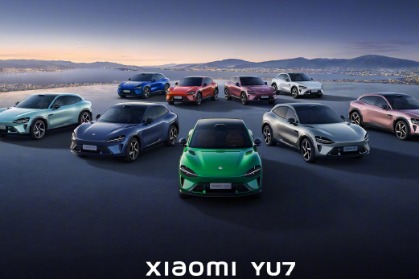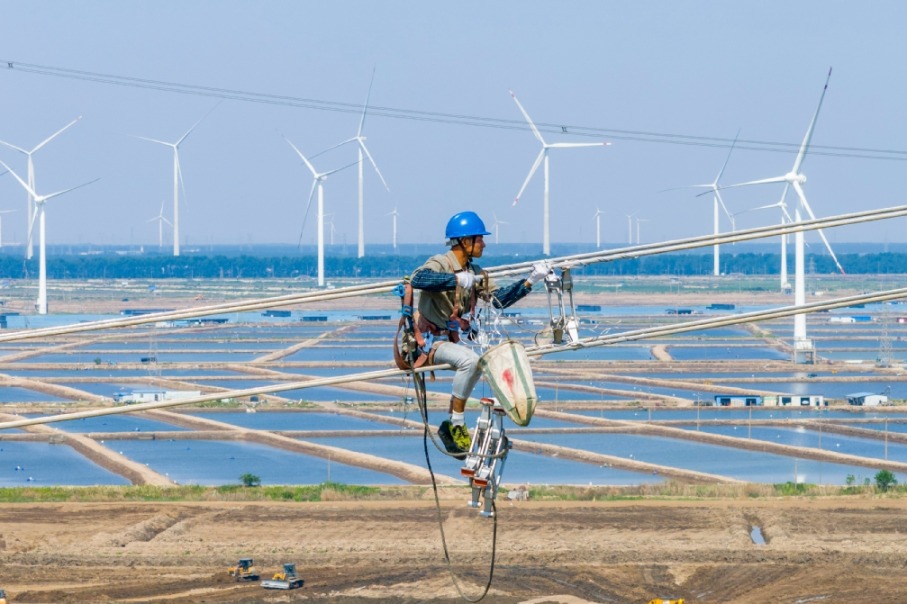Trains running at 4,000 km/h? Imagine that

Hyperloop technology looks good in theory, but a lot of research and development is needed to make it practical
China Aerospace Science and Industry Corp announced at a forum in Wuhan, Hubei province, on Sept 6 that it had launched a research and development effort in hyperloop, a futuristic mode of transportation that could allow trains to run at speeds of up to 4,000 kilometers per hour.
CASIC said it would design hyperloop in a way that would allow "vehicles" to run in a low vacuum so as to minimize air resistance, while using magnetic suspension technology to minimize friction.
Is hyperloop really possible? China Daily's Zhang Zhouxiang interviewed an expert on the subject and translated CASIC's explanation about hyperloop. Excerpts from both follow:

Hyperloop (or, in more technological terms, ultra high-speed magnetic suspension transportation in vacuum tubes) is the direction of our future research. It will not only make traveling more convenient but also help to improve many related technologies.
However, we currently face some major challenges in the field. For example, hyperloop involves high-temperature superconductivity technology, for which we need tube materials to be superconductive to relatively high temperatures. But when a train runs at speeds of up to 1,000 kilometers per hour, it will generate lots of heat and vibration in the vacuum tube. The question is: Will the materials remain superconductive to superhigh temperatures and with violent vibration?
For a train to run at more than 1,000 km/h, its rails have to be very, very smooth, in order to maintain stability. A flaw of even 0.1 millimeter might cause the train to be unstable and make passengers uncomfortable. Sometimes such a flaw could result in the train jumping the rails. And even the most advanced technology today cannot ensure our rails are smooth to that extent over thousands of kilometers.
Some might argue that the proposed hyperloop technology would allow the train to operate in vacuum tubes, but it would still be a mode of rail transport and has to meet the standards.
These are only two of the challenges that hyperloop faces. Others include safety concerns, difficulties in making vacuum tubes thousands of kilometers long and extremely high cost. This is not to say hyperloop as a technology is a failure ab initio, but it is necessary to conduct fundamental research first, so as to make it practicable.

Concerns about hyperloop transportation causing harm to passengers are unfounded. High speed does not cause any damage to the human body; it's rapid acceleration that does that. Hyperloop trains are expected to have a higher maximum speed than aircraft, but they would accelerate much more slowly. For hyperloop trains to cause harm to the human body, their rate of change of velocity would have to be faster than that of an aircraft, which would not be the case.
Besides, CASIC is not the only organization engaged in hyperloop R&D. US-based companies HTT and Hyperloop One are also conducting research, with the latter even using the term "hyperloop" in its name.
Compared with the two companies, which aim to increase a train's speed to 1,000 km/h, our goal is to raise it step-by-step to 4,000 km an hour. And we are confident of reaching that goal, because we are using electromagnetic force to propel hyperloop vehicles forward, while the other two companies plan to run hyperloop vehicles on wheels.
As for the major advanced technologies needed to develop hyperloop transportation, including ultrasonic technology, high-temperature superconductive magnetic suspension and simulation and modeling technologies, we are now playing leading roles in all those fields. In other words, we have more mature technologies than our counterparts in other countries at our disposal, and we are confident about succeeding in our R&D.
(China Daily European Weekly 09/15/2017 page13)
Today's Top News
- Xi urges villagers in Xizang to uphold ethnic solidarity
- Digital tax sparks breakdown in US-Canada trade talks
- Expert debunks Lai's 'four elements' argument for Taiwan's so-called statehood
- China opposes any tariff deal made at its expense: commerce ministry
- Nepal's hydropower a climate change solution
- UN Charter still guiding compass of humankind






























